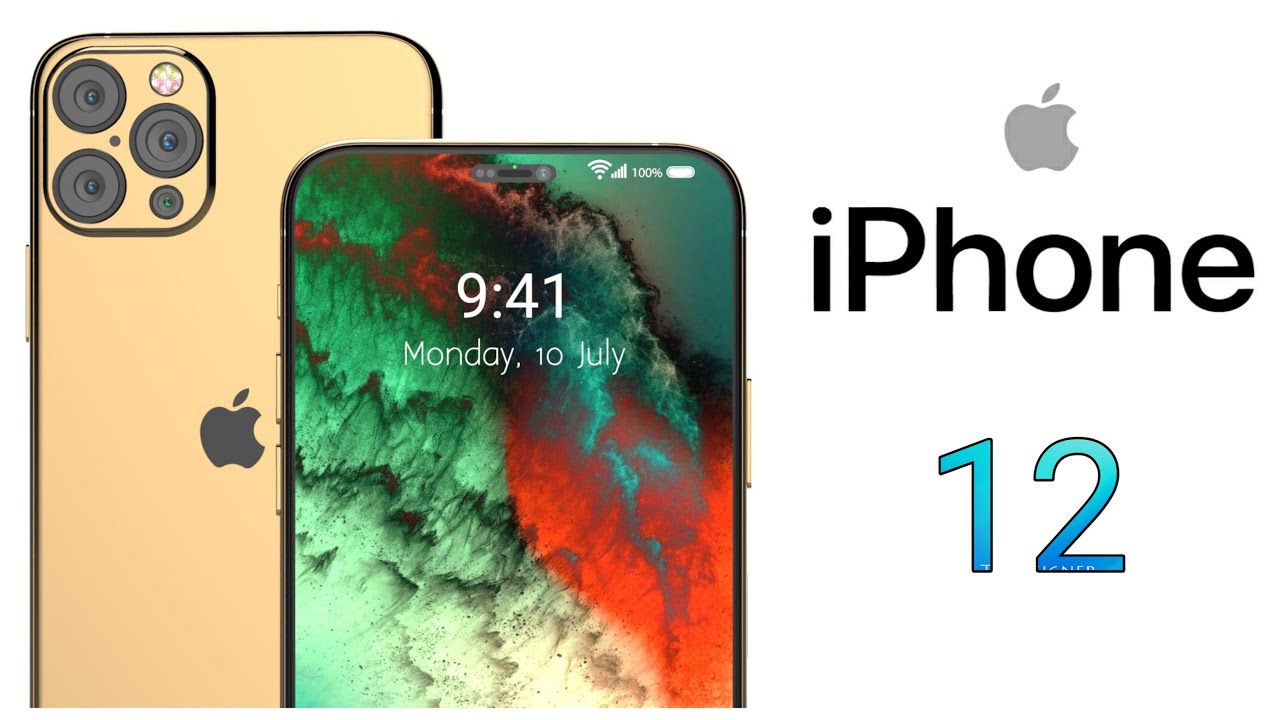The iPhone 12, Galaxy S11, Misspeaking on Galaxy Fold sales figures, and Tony Brooker
The following rather exciting tech news items featured during the course of the past week. Six iPhone 12 models on the way According to Ewan Spence of Forbes magazine on 13 December 2019, Apple is planning to launch six all-new iPhone 12 models, as well as bring back iPhone SE in 2020. Consistent with what […]

The following rather exciting tech news items featured during the course of the past week.
Six iPhone 12 models on the way According to Ewan Spence of Forbes magazine on 13 December 2019, Apple is planning to launch six all-new iPhone 12 models, as well as bring back iPhone SE in 2020. Consistent with what is now an Apple tradition, the iPhone 12 phones will ostensibly be released in September of 2020.
Gordon Kelly wrote about this development in Forbes.com on 12 December 2019: “Apple is wise to offer 4G and 5G versions of its phones, because 5G adds a significant price premium and 5G will have very limited availability in most countries around the world.” Kelly also says that “Apple is shrinking the iPhone 12 Pro down to a truly pocketable, one-handed size which many will welcome,” and that “the new line-up will prove extremely confusing to many buyers.” “Even more because of the imminent arrival of the iPhone SE2, a new iPhone 8-styled phone with Apple’s latest A13 chipset, which is expected to be called the iPhone 9.” Kelly lists the six iPhone models: (a) iPhone 12 4G: 6.1-inch LCD, dual cameras, (b) iPhone 12 Pro 4G: 5.4-inch OLED, dual cameras, (c) iPhone 12 Pro 5G: 5.4-inch OLED, dual cameras, (d) iPhone 12 Pro Plus 4G: 6.1-inch OLED, triple cameras, Time-of-Flight (ToF) 3D sensing capabilities, (e) iPhone 12 Pro Plus 5G: 6.1-inch OLED, triple cameras with ToF, and (f) iPhone 12 Pro Max 5G: 6.1-inch OLED, triple cameras with ToF. So, so complicated!
Misspeaking by Samsung president on Galaxy Fold sales figures On 12 December 2019, Samsung Electronic’s President Young-Kwon Sohn stated that his company had sold one million Galaxy Fold smartphones: “Samsung’s first folding phone may have been fraught with a stumbled launch, reliability woes, and a nearly $2,000 price tag, but that hasn’t stopped the company from finding a million people to buy the Galaxy Fold,” according to statements credited to Sohn.
However, this statement made by the president of the world’s largest smartphone manufacturer might not have been correct! Samsung has subsequently (on 13 December 2019) clarified the issues to South Korea’s Yonhap News Agency, saying that it hasn’t actually sold one million Galaxy Fold devices! According to Yonhap News, “But a Samsung spokesman said Sohn may have confused the figure with the company’s initial sales target for the year, emphasizing that sales of the tech firm’s first foldable handset have not reached 1 million units.”
As it stands, however, no one knows how many Folds have been sold, though the target for 2019 is set at 500,000. There are speculations by industry insiders that Samsung’s foldable phone sales will pick up next year, perhaps to the tune of 6 million in 2020. It is also rumored that Samsung will unveil its new clamshell-style foldable smartphone in February 2020 alongside the Galaxy S11 series.
“Samsung is expected to sell 6 million units of its foldable phone in 2020 and 20 million units in 2021,” Choi Bo-young, an analyst at Kyobo Securities, said. “Prices of foldable phones are expected to go down gradually, and this would push up demand for foldable handsets.”
Galaxy S11 Leaks Samsung Galaxy S series of high-end smartphones is planned for release on 18 February 2020, according to some leaks. There will be the regular and the “Plus” versions. The enhanced battery life is what seems to be drawing some attention: 4500 and 5,000 mAh, respectively for S11 and S11+. The corresponding data for Galaxy S10 and Galaxy S10+ are 3,400 and 4,100 mAh.
Tony Brooker, pioneer of computer programming dies He was a mathematician and computer scientist, and is credited with developing the programming language for the world’s first commercial computer. He died on 20 November 2019 at a nursing home in Hexham, England at the age of 94. According to Cade Metz (13 December 2019 New York Times), Mr. Brooker, who had earlier carried out research on computing at Cambridge University, “joined the Manchester lab in October 1951, just after it installed a new machine called the Ferranti Mark 1.” His job, Brooker told the British Library in an interview in 2010, “was to make the Mark 1 “usable.”
To program the machine, codes made up of 0s and 1s were written. It was “extremely neat and very clever but pretty meaningless and very unfriendly,” Mr. Brooker reportedly said. Mr. Brooker later wrote a language he called Autocode, based on ordinary numbers and letters. This enabled many more people to program the machine, marking the beginning of “high-level” programming languages, or “languages that provide increasingly simple and intuitive ways of giving commands to computers, from the IBM mainframes of the 1960s to the PCs of the 1980s to the iPhones of today.”
According to the New York Times article, “after Mr. Brooker designed Autocode, Ferranti, the company behind the Mark 1, started a team that wrote test programs using the new language. One programmer was Vera Hewison, whom he married in 1957. (She died in 2018.) Another was Mary Lee Woods, whose son, Tim Berners-Lee, would go on to invent the World Wide Web.”
